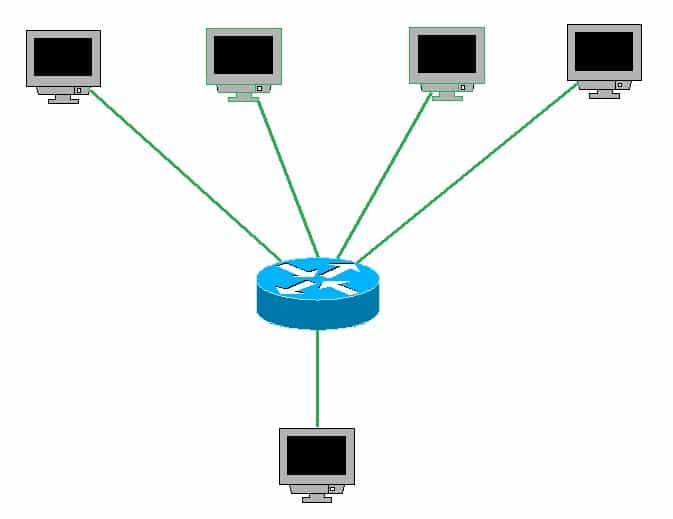There are three types of Ethernet addresses:
1. Unicast Addresses
Unicast addresses represent a single LAN interface. A unicast frame will be sent to a specific device, not to a group of devices on the LAN:
The unicast address will have the value of the MAC address of the destination device.
2. Multicast Addresses
Multicast addresses represent a group of devices in a LAN. A frame sent to a multicast address will be forwarded to a group of devices on the LAN:
Multicast frames have a value of 1 in the least-significant bit of the first octet of the destination address. This helps a network switch to distinguish between unicast and multicast addresses. One example of an Ethernet multicast address would be 01:00:0C:CC:CC:CC, which is the address used by CDP (Cisco Discovery Protocol).
3. Broadcast Addresses
Broadcast addresses represent all devices on the LAN. Frames sent to a broadcast address will be delivered to all devices on the LAN:
The broadcast address has the value of FFFF.FFFF.FFFF (all binary ones). The switch will flood broadcast frames out of all ports except the port that it was received on.
Download our Free CCNA Study Guide PDF for complete notes on all the CCNA 200-301 exam topics in one book.
We recommend the Cisco CCNA Gold Bootcamp as your main CCNA training course. It’s the highest rated Cisco course online with an average rating of 4.8 from over 30,000 public reviews and is the gold standard in CCNA training:



